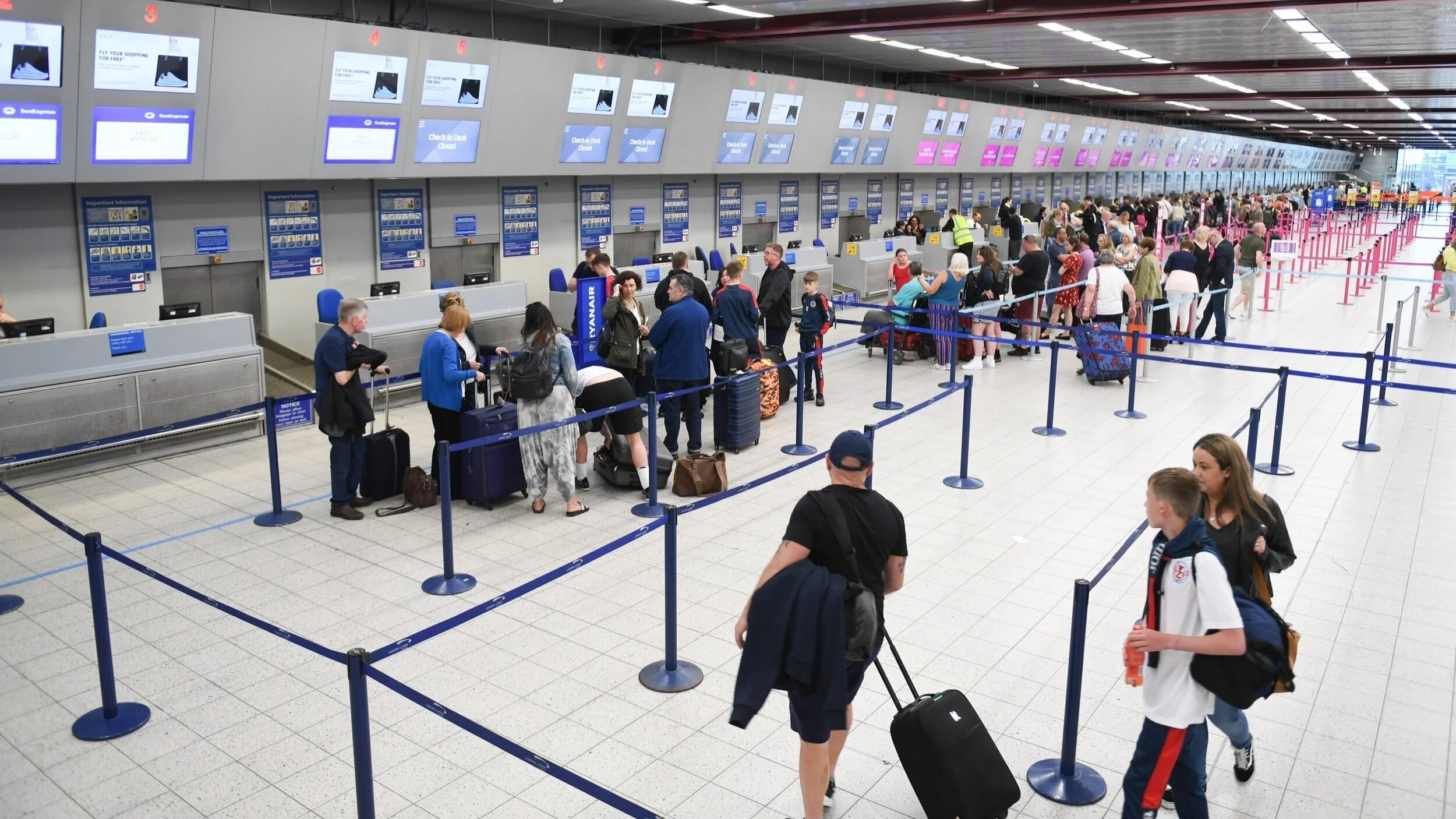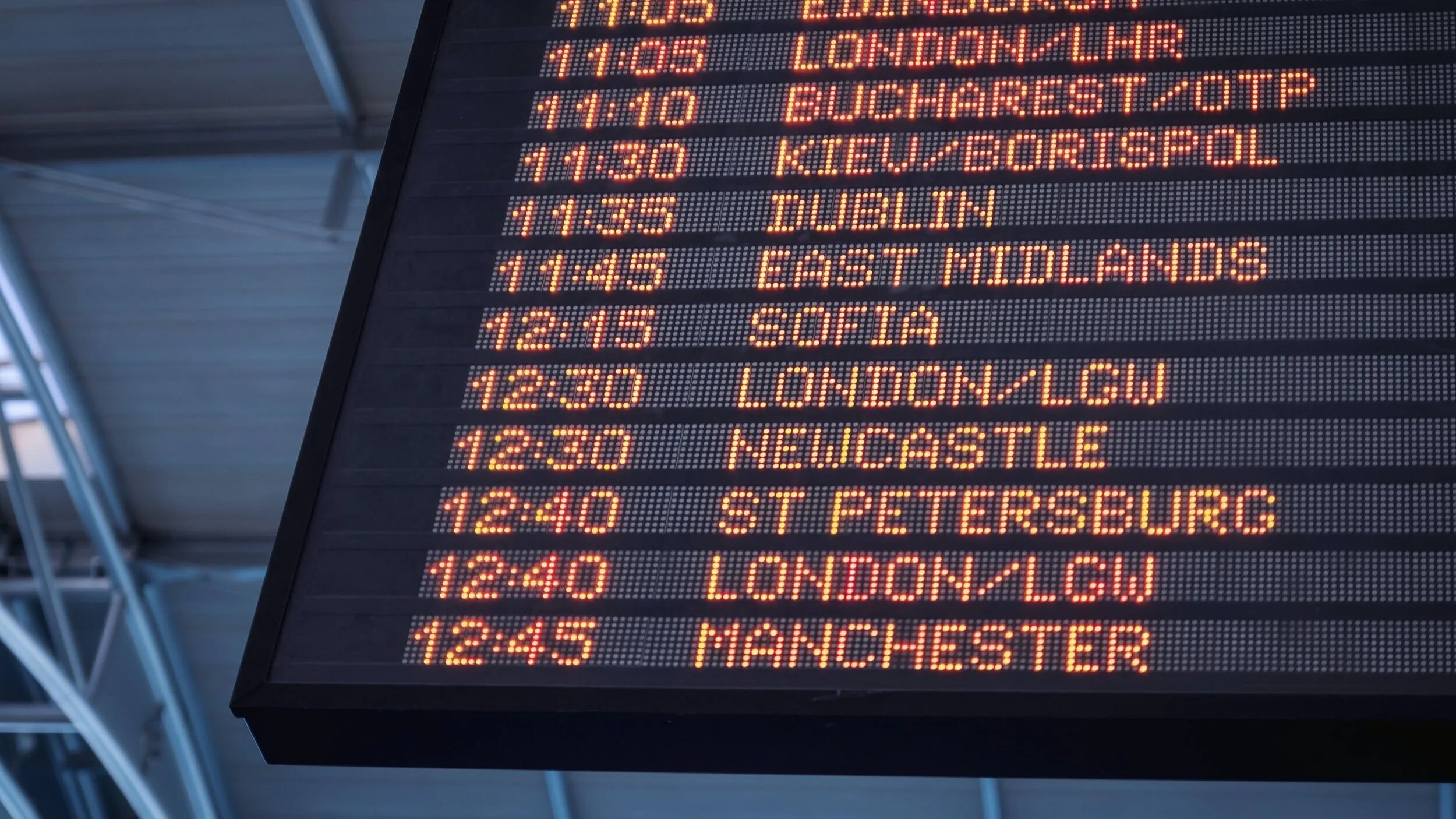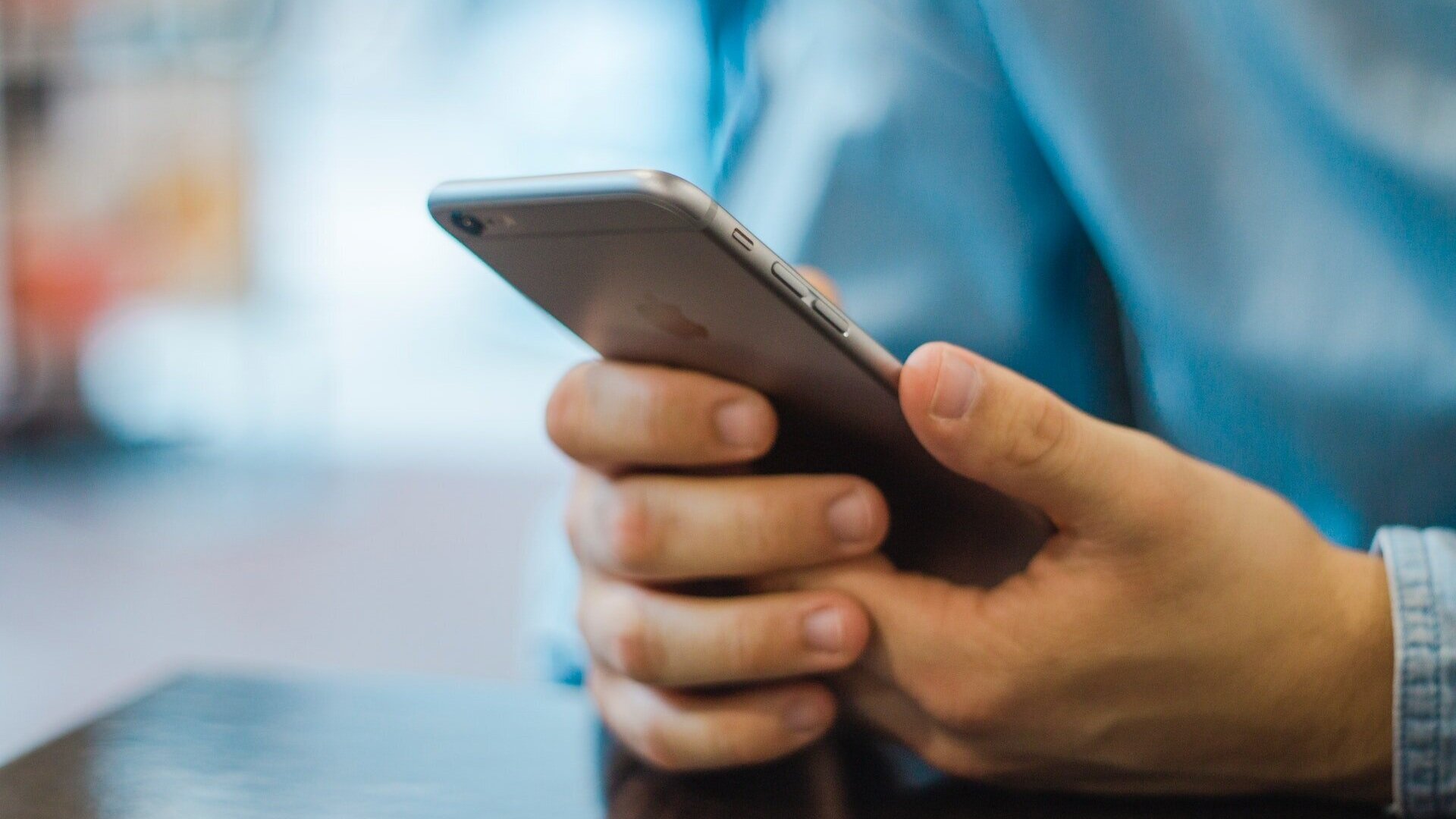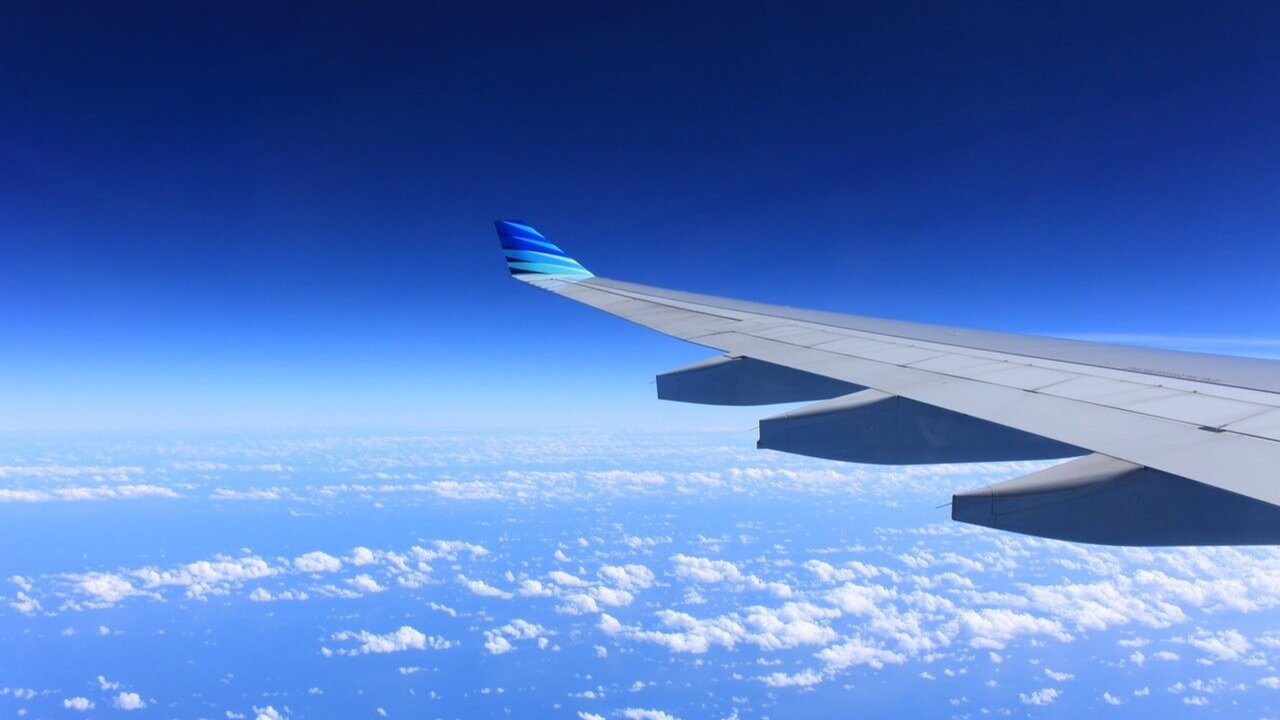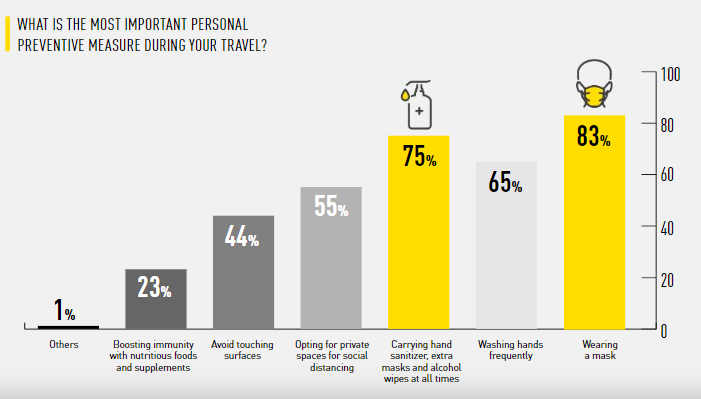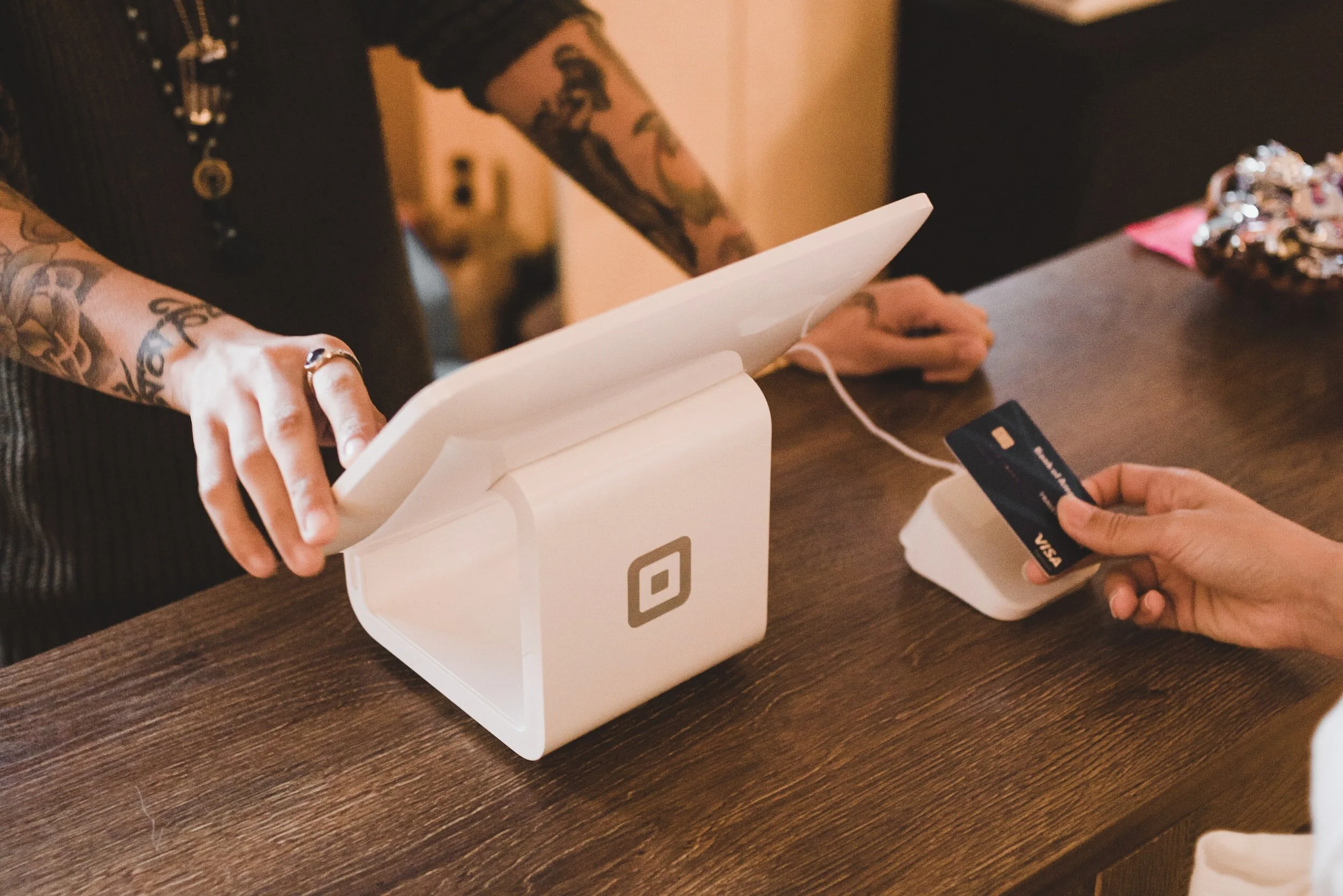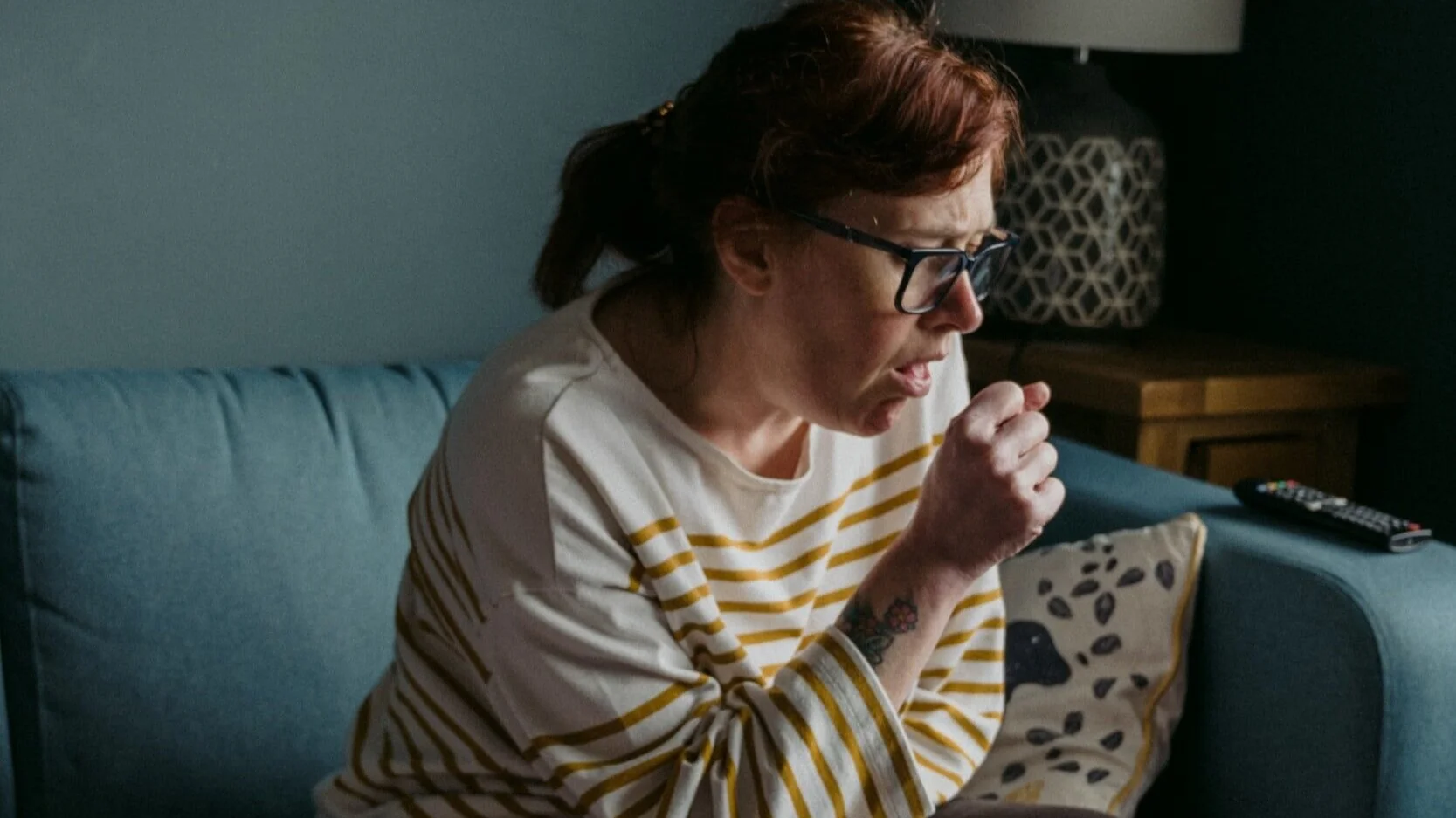Travel Disruptions: How Brexit Affects Your Travel Plans
It has been quite a year for the travel industry. Many of us are desperate to travel overseas having missed out on holidays in 2020. Yet the prospect of travel in 2021 presents us with more uncertainty. Between COVID and Brexit, there are many things we need to consider before booking our first flight.
What Will Travel Look Like In 2021?
Many of us are desperate to travel overseas having missed out on holidays in 2020. Yet the prospect of travel in 2021 presents us with more uncertainty.
To simply plan a holiday requires assessing and making predictions based on the COVID situation. Also, if you are planning on traveling to and from the UK there are new regulations to consider post-Brexit.
To help you make an informed decision on when, where or whether to book, this article provides a simple overview of the 2021 travel situation.
Changes for UK Citizens Post-Brexit
Be aware that the new rules for UK citizens travelling in Europe only apply within the Schengen area.
The Schengen area covers 26 countries without border controls between them. These countries are: Austria, Belgium, the Czech Republic, Denmark, Estonia, Finland, France, Germany, Greece, Hungary, Iceland, Italy, Latvia, Liechtenstein, Lithuania, Luxembourg, Malta, the Netherlands, Norway, Poland, Portugal, Slovakia, Slovenia, Spain, Sweden and Switzerland.
Different rules apply in Bulgaria, Croatia, Cyprus and Romania.
Passports
You don’t need to replace your passport. If your UK passport says ‘European Union’ on the cover you can still use it, it just loses all of its EU powers. The only requirement is that your passport is valid for at least three months beyond your date of departure.
Tougher Border Checks
Before Brexit, border officials only checked to see if your passport was up to date and belonged to you. However, now they may ask for the purpose of your visit, where you plan to travel, how long you plan to stay and if you have sufficient funds.
Health
European Health Insurance Cards can continue to be used until the expiry date on your card, guaranteeing access to free medical treatment to UK citizens in the EU.
The EHIC will soon be replaced by a GHIC (global) card which will cover you for health treatment not just within the EU but also in countries where there are UK agreements in place, such as Australia.
Driving
You don’t need an International Driving Permit (IDP) to drive in the EU , Switzerland, Norway, Iceland or Liechtenstein if you have a photocard driving licence issued in the UK.
The main changes are regarding motor insurance. You will now need to carry a physical, paper copy of a ‘Green Card’ (which provides a multilingual translation of your car insurance) when driving abroad. Contact your insurance provider at least six weeks before your trip to obtain this.
Mobile Phone Charges
Sadly, UK citizens no longer benefit from the EU ban on roaming charges. Although the big phone providers have suggested they will not reintroduce these charges, they are now allowed to do so if they wish.
Some phone companies have said that they will now charge extra to those customers who spend half their time overseas. This means that retired people sending the winter months abroad or those with holiday homes wanting to use their 90 in 180 days allowance will be charged more for their UK mobile phones.
Pets
Pet passports which entitled the owner to easily take their dog or cat into the EU are no longer valid.
Pet owners must now obtain an EU Animal Health Certificate, for which the animal must be micro-chipped. At least 3 weeks before travelling your pet must have a rabies vaccination and dogs must be given a tapeworm treatment between one to five days before entering the EU. These details will be recorded on the health certificate.
How much time can UK residents can spend in the EU?
One of the biggest setbacks of Brexit is that the amount of time you can spend in Europe is now vastly reduced. Without residency or visas, even those who own EU homes will only be allowed to spend 90 days (about three months) in any 180 (six months) in the Schengen area.
Once you have spent a total of 90 days in 180, you are not be allowed to visit any EU country for the following three months. For example, if you spent three months in Spain from December you won’t be allowed to re-enter any country in the EU until June.
However, the 90 day rule does not apply in Bulgaria, Croatia, Cyprus and Romania. You can visit these countries without it counting towards your 90-day total.
Is this the end of living in Europe part-time?
Thankfully, it is still possible to spend longer in your favourite Schengen area country although it will mean applying for a visa.
These are reasonably priced but require you to prove you have medical insurance and sufficient funds to support yourself while you are there.
France has a one-year visa which costs €99. In addition to the above, you’ll also need to provide evidence of your accommodation.
Spain has a long-stay visa priced €60 which requires both health insurance and a medical certificate, proof you haven’t broken the law in the past 5 years and at least £2000 per month for your intended stay.
The situation in Italy is somewhat different. Whereas in France and Spain you can arrange a long-stay visa without applying for residency, in Italy, it is not possible to apply for one without the other. With an Italian long-stay visa, you can enter Italy, but you must get your Italian residence permit, to authorize staying for more than 90 days.
How Brexit affects travelers planning to visit the UK
At the moment, EU citizens can visit the UK with national ID cards. But from 1 October 2021, you must show a valid passport and travel documents covering the dates of your trip. Your passport should be valid for the whole of your stay in the UK. Under the new system, if you’re an EU, EEA or Swiss citizen, you can visit the UK without applying for a visa and in most cases, will be able to stay for up to six months.
Nothing has changed for non-EU/EEA visitors following the end of the Brexit transition period.
How COVID-19 is affecting travel as 2021 begins
The most significant factor shedding doubt on our travel plans is COVID-19.
For the moment, UK citizens are not permitted to leave the country except for work or for those with residency outside the UK to return to their homes.
The majority of the EU is also under lockdown restrictions. The EU uses a traffic light map as a guideline to the high risk countries (signalled in red) from which travel should be limited. At the moment the only green, (safe and unrestricted ) area in Europe is a small section of Greece.
The following section examines how the variables of COVID are shaping up. This should help you to predict if a booking for summer 2021 is likely to come to fruition.
Why we can’t rely on the ‘R’ rate as a predictive measure
The R rate, which gives a measure of how quickly the virus is spreading, is used by many countries to enforce restrictions. Last year, we saw how the R rate affected whether a country remained on ‘safe to travel’ lists. However, now that we have lived through repeated waves of the virus, we know that even if your preferred destination has a low R rate now this doesn’t mean it will remain low in the months ahead.
How will vaccination programmes affect travel in 2021?
The beginning of COVID-19 vaccination programmes have provided us with our first real glimmer of hope. As the Pfizer vaccine seems to also protect people from new strains, we hope that a return to activities like travel might not be too far away.
Here are answers to the important questions on COVID vaccines and travel
What percentage of the population needs to be vaccinated before things improve?
When so many people are vaccinated that the virus struggles to find people to infect, COVID will no longer pose such a threat. This is what is known as achieving ‘herd immunity.’
The number of people needing to be vaccinated to achieve herd immunity depends on how infectious the virus is. As some strains of COVID-19 (such as the UK and South African) are reportedly more contagious, this could mean the ‘critical vaccination level’ will need to be higher.
The higher the critical vaccination level, the longer it will take to achieve.
Will COVID vaccination passports be available for travel?
There is speculation that a document will be available to those vaccinated which will enable them to travel. However, scientists are not yet certain whether the vaccine only prevents COVID symptoms. It is possible that, like the flu vaccines, those vaccinated will still carry the virus. In this case, being vaccinated wouldn’t mean you posed no COVID threat.
Will being vaccinated prevent me from spreading the virus?
It is expected that this information will be available from clinical trials soon. However, this article from a researcher at Cambridge University gives us cause to feel positive.
It explains why the vaccine will help defeat COVID even if it doesn’t stop us from carrying the virus. Briefly, this is because carriers with no symptoms transmit less of the virus. Therefore, ‘vaccinated people are less likely to transmit enough virus to cause severe disease.’ So, even if the vaccine doesn’t prevent us from carrying the virus, it will help prevent those we infect from becoming seriously ill.
How COVID will continue to affect travellers
Although the ongoing vaccination programmes will eventually help defeat the virus, herd immunity won’t be achieved quickly. Unless the vaccine proves to prevent us from carrying the virus, those who have been vaccinated won’t be granted exemption from restrictions or other preventive measures.
COVID travel protection measures, (such as testing before flying and/or a requirement to quarantine) are likely to be present for most of 2021, as will wearing masks and social distancing.
The return to travel and holidays as we knew them is still a long way off.
Tips should you decide to book
Restrictions around international travel in 2021 are likely to be constantly changing. However, if you are eager to book try these tips to improve the chance of an exchange or refund.
The best way to protect yourself from losing money on your 2021 holiday is to book a package through an ATOL protected company which means you will get a full refund within 14 days.
Be aware that your entitlement to a refund depends on whether or not your operator actually cancelled the booking. If they cancelled, you are eligible for a refund. If your plans change and you can no longer travel, most companies don’t have to offer an exchange or reimburse you.
As a result, airlines such as British Airways and Easyjet have started to offer flexible holiday bookings should you need to change your plans. Although you must inform them of changes 3 to 4 weeks before departure, this should make a booking, (if not confidence-inspiring) somewhat less risky.
Contributed to the Sanctifly Travel Wellness blog by Caroline James, journalist and editor of Immigration News UK
Travel Wellness Roundup - Feb 2021
February 2021 Edition. Everything you need to know about the travel wellness world in one convenient place.
Travel Wellness Roundup
February 2021
With the return to travel on the horizon we are seeing a dramatic increase in the number of travel-related content, news, and articles being published every today. There is a huge amount of travel-related information and sources available and we understand that getting to the key points can be overwhelming and time-consuming. As a travel-wellness focused brand, we read lots of travel content every month. We want to take on the burden of filtering through hundreds of articles and present you with the highlights.
This is the Travel Wellness Roundup- February Edition where we share all the most interesting, exciting, and topical travel wellness content the team at Sanctifly has read this week. Enjoy!
“Digital health passports are the hot topic at the moment as companies scramble to become the go-to solution. It will be interesting to see what travelers think about them and if they are actually usable when people start traveling internationally again. We are also seeing lots of studies and reports coming out showing that travelers are desperate to get on the road again. I am not surprised about that at all. Let’s hope we all get a chance to scratch our travel itch in the first half of 2021! “
- Maeve Power, Editor of the Travel Wellness Roundup
‘Study Finds Traveler Safety Concerns Will Diminish by Summer’
According to a survey of 2100 respondents conducted by Global Rescue, 77% are much less concerned about travel safety for the second half of 2021 (July to December) compared to last year, and 70% plan to take a trip by June 2021. It seems provided vaccine rollouts go according to plan people are planning to travel this summer.
‘In The New World Of Business Travel, Traveler Wellbeing Must Come First’
Risk management and traveler tracking are must-haves in ensuring business travelers are safe when they hit the road again. But the invasion of privacy is a growing concern among business travelers that needs to be addressed.
‘How To Travel Safely With Children In 2021’
It is likely that the first people to return to travel will be leisure travelers and that includes families. Euronews posted a great article with some helpful tips and ideas on how to travel safely with children in 2021.
‘How To Use Travel Wellness To Stay Healthy While You WFH’
So many of the challenges faced by frequent travelers pre-COVID did not disappear when they started to work from home. We were delighted to contribute this article to our partner, TravelPerk’s blog sharing our top travel wellness tips and how we are repurposing them in the current climate.
‘Digital Health Passports: Our Ticket Back To International Travel And Beyond’
Last week Plug And Play hosted a webinar about digital health passports that are currently being implemented and sparked an interesting debate about the need for common standards, privacy concerns, and more. In her opening address Stacey Fitzmaurice, Senior Official Performing the Duties of Deputy Administrator at TSA stated that while it is important to implement safety measures for travelers it is equally important to tell them about it and educate them on how their health and wellness is being prioritized. We can expect to see a lot more info sessions around travel wellness initiatives in the coming months.
‘Mandarin Oriental Hotel Group Launches 'Wellness on the Road' for Corporate & Group Travelers’
Mandarin Oriental Hotel Group has launched a new global initiative to help corporate and meeting travelers maintain a healthy lifestyle and mindful balance while on the road. This is a fantastic move in the right direction towards prioritizing health and wellness for business travelers.
‘XpresSpa To Benefit From Improving Travel Trends, New Outlet Openings: Analyst’
From the beginning of the pandemic Sanctifly partners, XpresSpa, have been working hard to pivot their offering to provide health and wellness services beyond spa treatments. They almost immediately offered their in-airport spa locations as Covid testing facilities, making the process of getting a test easier for those that were still heading to the airport. It is great to see traveler health and wellness brands being highlighted.
‘Masks Are Now Mandatory In And On Public Transportation Across The US’
As of Feb 1, masks are now mandatory in airports, bus and train terminals, and on trains, planes, buses, and public transportation. The CDC stated that face shields, masks with exhalation valves, and other forms of face coverings do not comply with the rule. Within the airport, the TSA will be responsible for ensuring passengers are wearing the correct face masks.
‘Expedia Group Releases Trends and Predictions for 2021’
Expedia Group has released its Trends and Predictions report for 2021 and the sentiment is, people are desperate to get back to traveling again. People are planning to spend big on longer vacations in 2021 and plan to use travel to reconnect with the world.
At Sanctifly we are committed to providing you with the best in travel wellness content. Download the app today to explore our content and start building your healthy habits at home with Sanctifly.
For more information on our membership types, click here.
5 Breathing Techniques You Need To Know
We are living in stressful and uncertain times and how we deal with that stress is so important. Here are 5 easy breathing exercises that you can have on hand to help cope with any stressful situation.
5 Breathing Techniques For When You Are Stressed Out
Diaphragmatic breathing
4-7-8 breathing technique
Body Scan -Focused breath
Alternate nostril breathing
Humming breath
We are living in stressful and uncertain times. Many of us are looking back over the last year and wishing we could go back to normality. While we will get there and things will eventually return to normal, we don’t want to go all the way back to our old ways. In this modern world of constant connectivity where progression and ‘success’ are valued above all else, stress is a serious issue for many people. We constantly feel that we are not good enough or not doing enough. No matter what stage of life you are in or what your daily routines are, we all encounter stress on a daily basis. And while some of it certainly can be avoided, unfortunately, some of it cannot. Therefore, how we deal with the stress and how we manage it becomes the most important tool we have for looking after our mental health and maintaining a wellness focused lifestyle. Let’s use this time to focus on building those healthy routines and creating a healthy habit toolbox so we can be ready for the return to normal.
How does breathing help with stress levels?
Breathing is a proven, long standing stress relief technique. The reason deep and focused breathing has such a profound effect on stress levels and its physiological impact is because it evokes the relaxation response. The ‘Relaxation Response’ was coined by Dr Herbert Benson of Harvard’s Mind/Body Medical Institute in his book of the same name. In the book, Dr Benson explores and explains the physical benefits of truly relaxing your body and mind and combating the negative impact of the flight-or-flight response. When we are stressed or scared or anxious our body and mind go into overdrive trying to keep us safe. Our heart races, our breathing quickens, and our minds race as we try to either get out of the situation or face it head on. While this is a valid evolutionary response, it just does not suit the modern environment we have created. And so, we end up having to deal with the truly negative effects of stress such as high blood pressure, anxiety, poor sleep patterns and more. The relaxation response tells our body and mind that we are safe and can help counteract those negative effects. Breathing deeply and practicing specific breathing techniques is a sure way to evoke the relaxation response and get your body and mind into the relax and restorative state it needs to heal physically and deal with mentally challenging situations.
Here are 5 breathing techniques that you need to know and how to practice them correctly.
1. Diaphragmatic breathing
Throughout our day, particularly on days when we are feeling stressed and overwhelmed, we tend to take shorter, shallower breaths. Taking short, shallow breaths can have a serious effect on our health and wellness. It increases blood pressure and heart rate and makes it more difficult to relieve stress. Taking deep breaths doesn’t tend to come naturally to us. We needed to make an extra effort to breathe deeply so that we can take advantage of the amazing benefits.
The key is to send the breath down into your diaphragm, making it expand as you inhale. Find a comfortable seated position. Place one hand on your chest and one hand on your stomach. Take a deep inhale, feeling your stomach expand beneath your hand, and your chest rise slightly. Continue this process, making sure that the hand on your stomach continues to rise and fall with each breath.
Diaphragmatic breathing is great for when you feel your heart is racing.
2. 4-7-8 breathing technique
As mentioned above, deep breathing is extremely beneficial for our health. Holding our breath and extended exhalation are the next step in utilizing breathing techniques to calm our nerves and manage stress. In a series of studies conducted in 2018 and 2019, longer exhalation showed a positive impact on combating stress responses and improving heart rate variability. The 4-7-8 technique can help you master extended exhales.
Find a comfortable seated position, making sure you are not holding any tension in your neck and shoulders. Close your eyes. Close your lips and press your tongue gently against the roof of your mouth. Count to 4 as you inhale through your nose, count to 7 as you hold your breath and exhale through your mouth slowly for a count of 8. Repeat for four breath cycles. It may take some practice to get the timing right.
Extended exhalations are great for bringing a sense of calm to your body and mind. Practice the 4-7-8 breathing technique if you feel anxious or on edge.
3. Body scan - focused breath
A body scan is a meditation practice that aims to create a deeper connection to your body and help you to acknowledge any feelings or sensations you might have without judgement. Although it is primarily used as a meditation technique it can be utilised in other ways. Some people use it to relax, to fall asleep and, when combined with focused breathing, to help reduce stress and anxiety.
Lie down on your back in a comfortable position. You can also do it seated but lying flat on your back is preferable. Focus your attention on your feet, don’t move them, just make then the focus of your thoughts. Acknowledge how they feel right now and take two deep breathes while focusing on them. Continue up through each part of your body, your shins, knees, thighs etc. Take two deep breaths each time you focus on a body part.
Focused breath breathing techniques are great for calming racing thoughts. Because you are giving your thoughts something specific to focus on it is much easier to quiet them and feel the full impact of the breathing exercise.
4. Alternate nostril breathing
Nadi Shuddhi, or alternate nostril breathing is a yogic breathing technique where you alternatively inhale and exhale through one nostril or the other. The practice is used to help control your breathing and reduce stress. The focused attention that is required helps to still racing thoughts and has added benefits for your lungs and respiratory system.
First, find a comfortable seated position. Hold up your right hand up with all five fingers extended and then bend down the index and middle finger towards your palm. Take your thumb and use it to close your right nostril. Inhale deeply through your left nostril, then use your ring finger to close the left nostril and release your thumb from your right nostril. Exhale fully through your right nostril. With your left nostril still closed, inhale deeply through your right nostril and repeat the process. Continue for 5-15 minutes.
Alternate nostril breathing helps to increase and improve lung capacity. Use this breathing technique if you often feel breathless when overwhelmed. It will help train your lungs to embrace their full capacity which will help relieve stress levels.
5. Bhrahmari or the humming breath
Bhrahmari Pranayama, also known as the bumblebee or humming breath is a yogic breathing technique that incorporates sound to help you feel grounded and calm. This breath practice is used to relieve stress, anxiety and anger.
Find a comfortable seated position and gently soften your gaze or close your eyes. Close your mouth with your teeth slightly apart. Inhale deeply and on the exhale press your tongue to the roof of your mouth and make a low humming sound. Continue making the sound for the entirety of your exhale. Repeat the process for six rounds and then return to your normal breathing.
The humming breath breathing technique is great for releasing tension, especially if you are carrying that tension in your mouth or jaw. Practice this method if you find yourself constant clenching your teeth or tensing your shoulders due to stress.
At Sanctifly we are here to support our community build healthy and lasting habits. Even though we are not flying right now, maintaining healthy routines is still important. Although most of the content on the Sanctifly app was designed for traveling, it is applicable and helpful in all walks of life. Building good habits around stress management at home and on the road is one of the main pillars of support we offer our members. Find stress management, wellness tips and more in the Sanctifly app today and start your journey to better health and wellness.
Download the app today to explore our content and start building your healthy habits at home with Sanctifly.
For more information on our membership types, click here.
What Do Travelers Need To Feel Safe On The Road?
Many surveys suggest that travelers are eager to start exploring again, however only if their safety concerns are met. Plaza Premium Group conducted a survey where they asked over 2000 travelers their thoughts and expectations on travel in 2021 when they expected to travel, and what would be vital to make them feel safe. Here are some of the key points found in the survey.
2020 was the year of grounded flights and canceled trips. It is a brand new year, and we are so excited to get traveling again, and we are not alone. Many surveys suggest that travelers are eager to start exploring again, however only if their safety concerns are met. Feeling safe and staying healthy is going to be the top concern for travelers in 2021 and beyond. We have spent a lot of time writing about what airports are doing to help passengers navigate the new normal as they return to travel. But it is equally important to understand what travelers want and what they consider the most important.
Plaza Premium Group conducted a survey where they asked over 2000 travelers their thoughts and expectations on travel in 2021 when they expected to travel, and what would be vital to make them feel safe. Here are some of the key points found in the survey.
Source: https://issuu.com/plaza-network/docs/what_is_the_new_normal_in_airport_h_370336b93f6aca?sc_src=email_4088035&sc_lid=207579285&sc_uid=rHkDaHb8tY&sc_llid=6966
49% of travelers consider hygiene and safety a priority.
There has been a strong focus on hygiene and safety in the last year across all industries. It is no surprise that travelers need to know that airports and airlines are making it a top priority in order to feel safe. The crowds, enclosed spaces, and multi-touch surfaces associated with air travel need to be addressed, and airports and airlines need to prove to customers that they are doing everything they can to make the spaces safe. Airports and airlines should be introducing measures such as increased cleaning and hygiene protocols, contactless processes, staggered arrival times, and social distancing.
83% consider airport lounges and in transit hotels essential.
This is an interesting one. Presumably, it only applies if airport lounges either have private spaces travelers can book or drastically limit the capacity. Anyone who has spent time in a busy lounge pre-Covid will know they are not the best spaces to stay away from other travelers. However, if lounges limit numbers and apply social distancing measures, they could become sanctuaries for weary travelers. And access to lounges and to private rooms in transit hotels will become a highly sought after benefit that travelers are willing to invest in. Access to these spaces will become a must-have benefit in credit card, airport reward, and travel wellness programs, such as Sanctifly.
83% of travelers consider wearing a mask as the most important preventive measure during travel.
Studies show that masks reduce the spray of droplets when worn over the nose and mouth, therefore preventing your respiratory droplets from reaching others and, when others wear them, preventing their respiratory droplets from reaching you. Masks are most effective when everyone wears them and travelers are recognising this. The problem occurs when everyone is not on the same page. Airports and airlines can help to support travelers by enforcing mask-wearing in the airport and on the flight.
Check out this article for tips on the mask hygiene.
While wearing a mask is considered the most important preventive measure, according to travelers, there are many other measures that should also be implemented by the air travel industry. These include:
Body temperature checks
An elevated temperature is a key indication that you have contradicted Covid-19. While everyone should be monitoring their temperature themselves and stay at home should they notice a change, this is not always feasible. Airports and airport facilities, such as lounges, should implement temperature checks in order to screen passengers.
Availability of hand washing facilities and sanitizer
Wash and sanitize your hands was the calling card of 2020 and it will continue into 2021. The availability of handwashing facilities and hand sanitizer should be widely available across airports and on planes. While it is expected that the airport or airline will provide access to these items, bringing your own can bring great peace of mind. The TSA recently increased the liquid allowance for hand sanitizer in carry-on luggage from 3.4 oz to 12 oz so that travelers can bring larger quantities on their trips. Please note that this increase does not apply to other liquids. Travelers can also pack some disinfectant wipes to wipe down the seat and tray table when boarding the plane. Again, the airline will have hygiene protocols in place for between flights, however, for peace of mind, it can be good to do it yourself.
Social distancing
Maintaining social distance is a huge factor in preventing the spread of Covid-19. We have all now become accustomed to staying 2m apart and following social distancing signs and floor stickers when in public places, and the airport is no different. Make sure you follow the instructions carefully while in high traffic areas such as security control and keep your distance from other passengers as much as you can. Do not sit down next to another passenger while waiting at the gate, even if it is the only seat! Check out this article for some inspiration on how and where to find quiet space at the airport.
Although some airlines are practicing this by blocking the middle seat, be prepared that this is not the case for every flight. Some airlines, in a bid to earn more revenue after a quiet year, are selling every seat they can, and therefore there is no social distancing on planes. If you do not feel comfortable sitting next to a stranger during a flight, make sure to check with your airline prior to departure and enquire about their social distancing policy.
Contactless experiences
The pandemic has expedited the need for more seamless and contactless processes at airports. Whether we are talking about checking in, passport control, accessing gate information, and even ordering food and entering airport facilities such as lounges, so much can be done through an app or online platform. When almost every traveler has a smartphone and access to free Wi-Fi, there is no limit to what we can make contactless. We were starting to see this becoming a trend in recent years, with airports promoting online processes as more convenient and time saving for travelers. The pandemic has shown us that we can rely on technology for a lot of these processes, and we should embrace that in order to stay as safe and healthy as possible while on the road.
A key point that emerges from this survey and many others is that travelers, airports, and airlines need to work together to make these safety measures work. We need to maintain a social distance, but the airports and airlines need to facilitate it. There should be access to hand sanitizer and increased cleaning of surfaces, but we should also bring our own sanitizer and avoid touching unnecessary surfaces.
At Sanctifly, we are committed to helping our members and travelers everywhere stay safe and healthy as we return to travel. With vaccines on the horizon and travelers eager to take to the skies again, it is clear that we will be on the road again soon. However, we all still want to be as safe as possible, and everyone needs to do their part. As well as providing access to wellness facilities all over the world, at Sanctifly, we are constantly sharing useful information about health, wellness, nutrition, exercise, and traveling in the post-Covid world. Make sure to download the Sanctifly app and follow us on social media to get all the information you need to Travel Well in 2021!
Download the app today to explore our content and start building your healthy habits at home with Sanctifly.
For more information on our membership types, click here.
Flying In The New Year? What To Consider On Your Next Trip
The travel experience has changed dramatically due to Covid-19. Sara Quiriconi flew from MIA to LAX at the start of December and shares some thoughts, advice and what to expect if you are traveling in the US over the holidays or in early 2021.
Recently Sanctifly content creator, Sara Quiriconi flew from Miami to Los Angeles and we asked her to describe her experience so we could get a sense of what it’s like to fly in these strange times.
1. What airports were you traveling between?
I flew between Miami (MIA) and Los Angeles (LAX) at the beginning of December 2020.
“TOP TIP - Pack your own snacks and water bottle. Food is limited but water refilling stations are still available”
2. What about the airport was different?
It was so quiet! Eerily quiet. I am so used to travel and dealing with crowded terminals and long lines, this was a weird experience. But it also depends on the time you're flying; I had a friend wait in the same Priority check-in line the day after I flew and was waiting 30 min to check a bag. So, hit or miss, but overall noticeably quiet. Not all shops and restaurants were open; again, depends on the time you fly, but I'd say only approx. 50% of shops and restaurants were open during daytime flight times. I was definitely glad I ate before I left for the airport, do not expect to get a good meal at the airport or on the plane!
3. What about the plane was different? Were there any particular restrictions imposed?
I was on a 777 and it was close to empty flying LAX to MIA; service is limited to drinks, no food on the shorter domestic flights. They give you a baggie with a water bottle, wipe and cookie, that’s it! I always bring some healthy snacks with me on the plane and I was glad of it! Every airport and airline will be different, I flew AA (American Airlines) and masks were mandatory.
4. What advice do you have for anyone flying in the coming months?
There are lots of new things to think about when planning a trip nowadays. Here are some things to consider/pack:
Pack your own snacks & water bottle (most airlines only give 6 oz. on shorter flights, if any)
Plan extra time, more than usual — airport traffic and security is a hit or miss these days, better to have extra time than be late. On that note it is also important to check with the airport to see if there are any restrictions on how early you can arrive at the airport. In order to reduce crowds some airports may be restricting the time that you can arrive, and it is important to factor this into your travel plan.
Bring your own pen. no one will let you borrow one these days if you need it for customs forms, work, etc.
Check out Sara’s experience here.
Without a doubt the flying experience has changed dramatically thanks to the impact of Covid-19 and we need to change along with it. With a little preparation and planning, your next trip can run as smoothly as pre Covid. Here is what you need to consider and what you need to change in your pre travel routine to fly safely in 2021 and beyond.
1. Pack the new essentials
At this point we should all be used to making sure we have a mask or other form of face covering when we leave the house. Masks are incredibly important in reducing the impact of Covid-19 and are now mandatory in many airports and on many airlines. Make sure you pack a face covering for the flight, plus enough to get you through your trip. Remember all reusable face coverings should be washed daily so make sure you either pack enough spares or have a plan for washing your masks throughout your trip.
Hand sanitizer is another item on the new essential list. Although hand sanitizer stations will be available in the airport, having your own can offer comfort. The TSA allows travelers to bring hand sanitizer containers up to 12 oz (354ml) in their carry on. Please not that the usual restriction of 100ml apply to all other liquids.
If you forget your mask or your hand sanitizer there will be options to purchase TSA compliant PPE equipment at the airport. However, it is always better to be prepared so make sure to add them to your packing list.
2. Make sure your phone is charged
Another precaution we are seeing in many airports around the world is the move to contactless processes throughout the airport journey. Whether you are checking in, checking a bag, ordering food or even in some cases, using the elevator, you will need your mobile phone. Your phone will become the ultimate travel companion and the last thing you want it to me running out of charge when trying to show your boarding pass! Make sure you charge your phone fully before leaving the house. You can also pack a portable battery bank (make sure that is charged too) so that you will always have the option to top up your phone.
Another good tip is to take a screen shot or have your boarding pass downloaded onto your phone before you get to the airport. The last thing you want is to be unable to access your travel documents because you lose service.
On the plus side, if you have your phone at the ready to move through the airport, you can also have the Sanctifly app on hand to help you to Travel Well. On the app we have lots of traveler focused fitness videos, airport stretch routines and guided meditations to help you make the most of your travel downtime.
3. Check your destination country’s travel restrictions and regulations for when you go and your own country’s rules for returning
Planning for quarantine is not something any of us expected to have to add to our travel routines, however Covid-19 has made it a reality. Make sure to check the relevant travel restrictions and other health and safety regulations of your destination country. Here is a great interactive map where you can find a list of the travel and health regulations for countries all over the world. Make sure to check just before your trip as changes are being made all the time.
Plan for quarantine when necessary. Do you have to self-isolate when you arrive? Do you have somewhere you can do that and access to the relevant supplies you need? Or will you need to quarantine when you return home? Make sure to stock up on basic supplies before your trip so that you do not need to leave your house when you arrive home from your trip. Set up a grocery delivery with a local service or have a friend drop off some supplies when you return so that you can quarantine effectively.
And don’t forget to check the health and safety regulations imposed by your airline. Are you required to take a test before or after flying? If yes, you need to know when and where you will be taking the test, how long it will take to get results etc. It is difficult to give specifics as every country and state is slightly different however the one universal point is that you need to plan and prepare in advance.
4. Have a contingency plan in case you get sick
Getting sick before you take a trip is easy to deal with, you simply stay at home. However what we may not have considered is, what do we do if we get sick or come into close contact with someone with Covid-19 while we are away from home? Having a contingency plan in place before going on the trip is vital so that we are not putting ourselves or anyone else at risk.
If you are feeling sick, displaying symptoms or have come into contact with someone with Covid, you will need to isolate. This can be difficult to accept if you are far from home, but if you have a plan in place, it makes the process a lot less daunting. Make sure you have the resources available to stay in your destination country should you need to. Take some time to learn about the support services available in the city you are staying in and make sure to take the time to reach out to loved ones and friends so that you do not feel lonely.
As many of us start to fly again or at least start to plan trips for 2021, it is important to remember that things will not be the same. Our usual travel routines will need some tweaking in order to adjust to the new normal. Keep these things in mind when planning your next trip so that you can easily change and update your travel routine.
Download the app today to explore our content and start building your healthy habits at home with Sanctifly.
Sign up to the Sanctifly Travel Wellness Newsletter for monthly tips and information on the travel industry and how you can stay safe and healthy in the post Covid-19 world.
For more information on our membership types, click here.
Sanctifly Pivots To Welcome Leisure Travelers
While 2020 has been a tough year for everyone in the travel industry, with airports left empty and business travel at a standstill, we at Sanctifly are looking to the future. Read all about the new updates to the Sanctifly offering as we welcome leisure travelers to the membership app.
Sanctifly: The essential travel companion for 2021 and beyond
While 2020 has been a tough year for everyone in the travel industry, with airports left empty and business travel at a standstill, we at Sanctifly are looking to the future. Our team has not spent this quiet time waiting and hoping for a return to normal, but instead we have been working on improving our product and pivoting our offering to become the essential travel companion for 2021 and beyond. And it is needed now more than ever. If this year has thought us anything, health and wellness should be made a top priority. Travel is often focused on the destination and we accept that we need to struggle through the journey. We are on a mission to change that narrative and offer our members the opportunity to make the most of their travel downtime, whether they travel once a year or multiple times a month. Here are some of the changes and updates Sanctifly have been working on to help get ready for the next phase of travel.
We believe Travel Wellness should be for everybody.
The Sanctifly app was originally built for business travelers that fly a couple of times a month. Now we have altered our approach and expanded our offering to provide value to leisure travelers. Travel Wellness and the tools to build healthy travel habits are not just for those that travel frequently. We recently launched a new membership option that allows members to more easily pay for experiences as they go. Premium membership starts at just $75.00 per year and members can add points to their membership account whenever they need to. No longer solely focuses on travelers that fly multiple times a month, our new offering is perfect for leisure travelers that may only fly once or twice a year but still want to prioritize their health and wellness while on the road.
The recent upgrade to a points system also shows our dedication to expanding our offering. By making the booking system in the app more versatile we now have the option to add a more diverse range of facilities to the app including luggage storage, day rooms, workspaces and more.
But we are not just extending our offering, the team here at Sanctifly has also been hard at work to expand our content and become the go to app for travel tips, airport guides and post Covid travel advice. In the last few months the content offering in the app has more than doubled to include 100+ carefully curated airport guides, more wellness focuses fitness, food and meditation videos created by industry experts and 500+ free things to do at airports all over the world. Sanctifly aims to not only give our members access to wellness facilities but also become the ultimate tool in building better travel habits while on the road.
There are exciting times ahead for Sanctifly and our valued members. With new wellness partners being added to the app every month and more exclusive membership perks being launched in 2021, we are working toward becoming the essential travel companion for all travelers.


